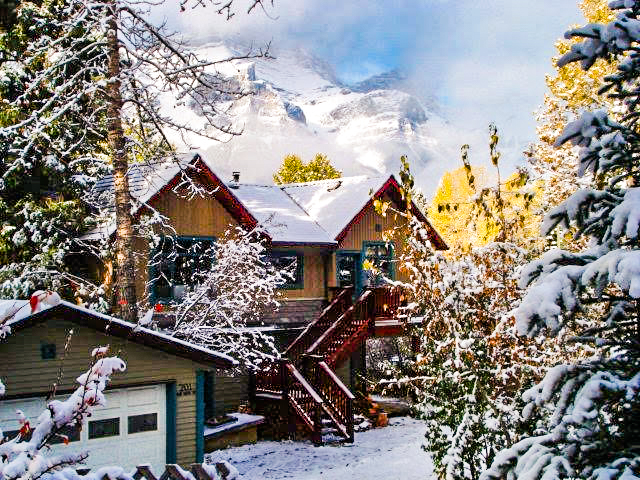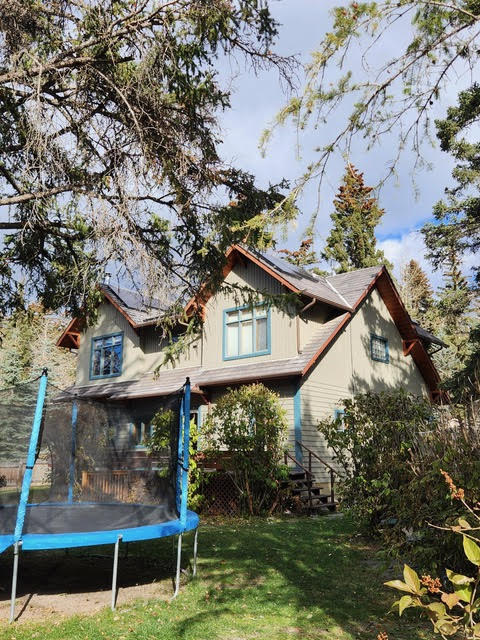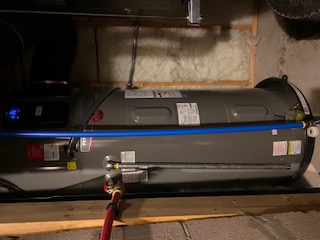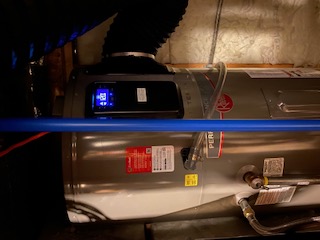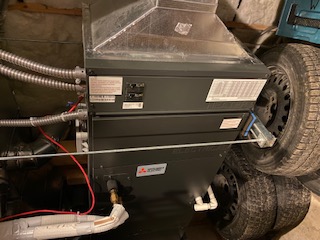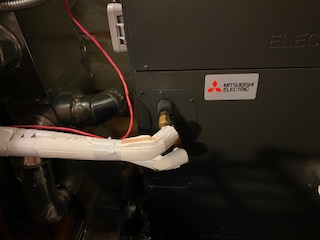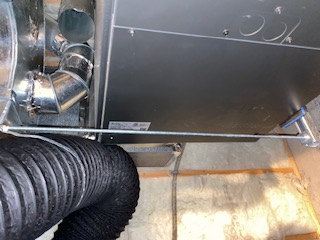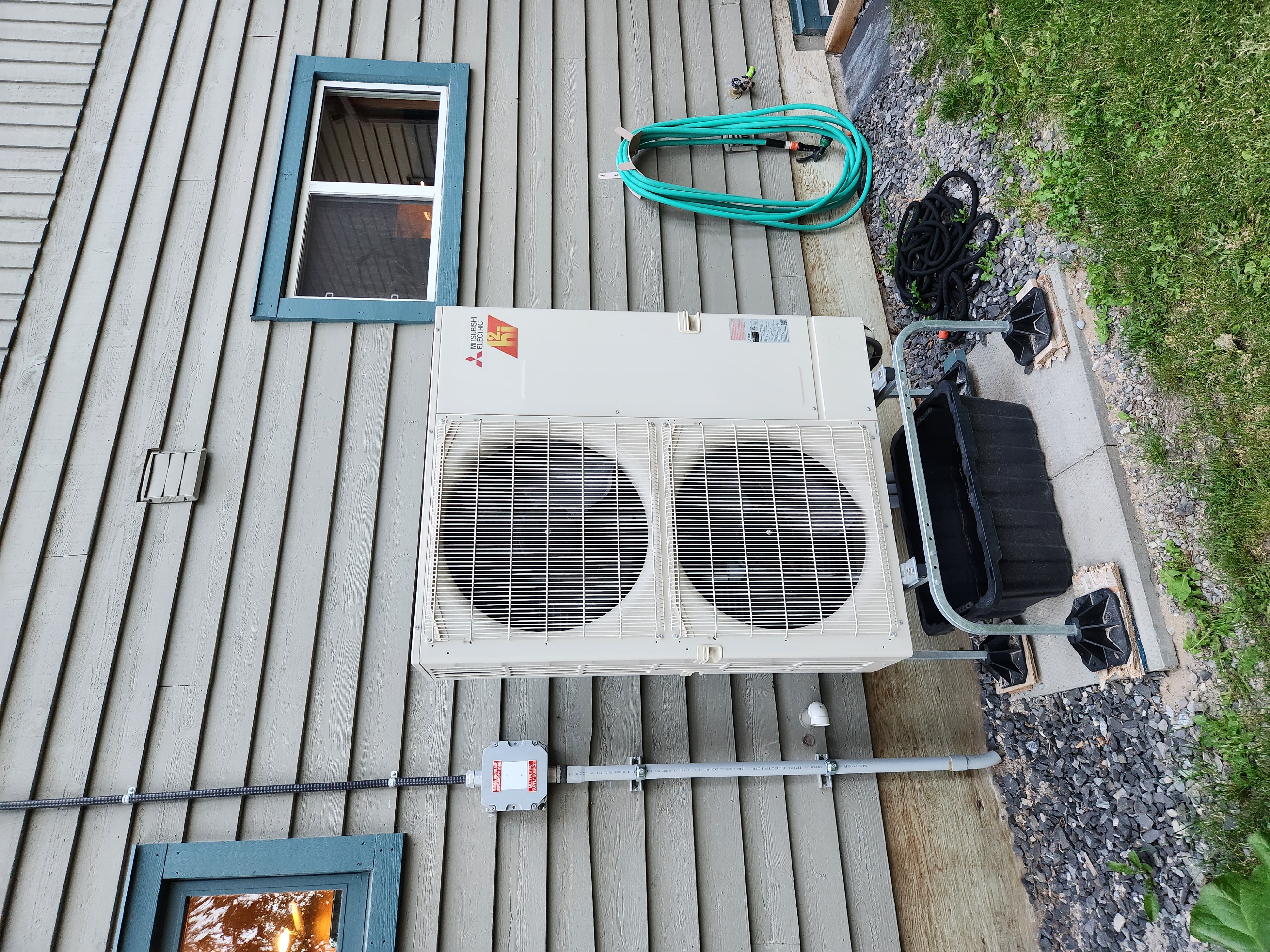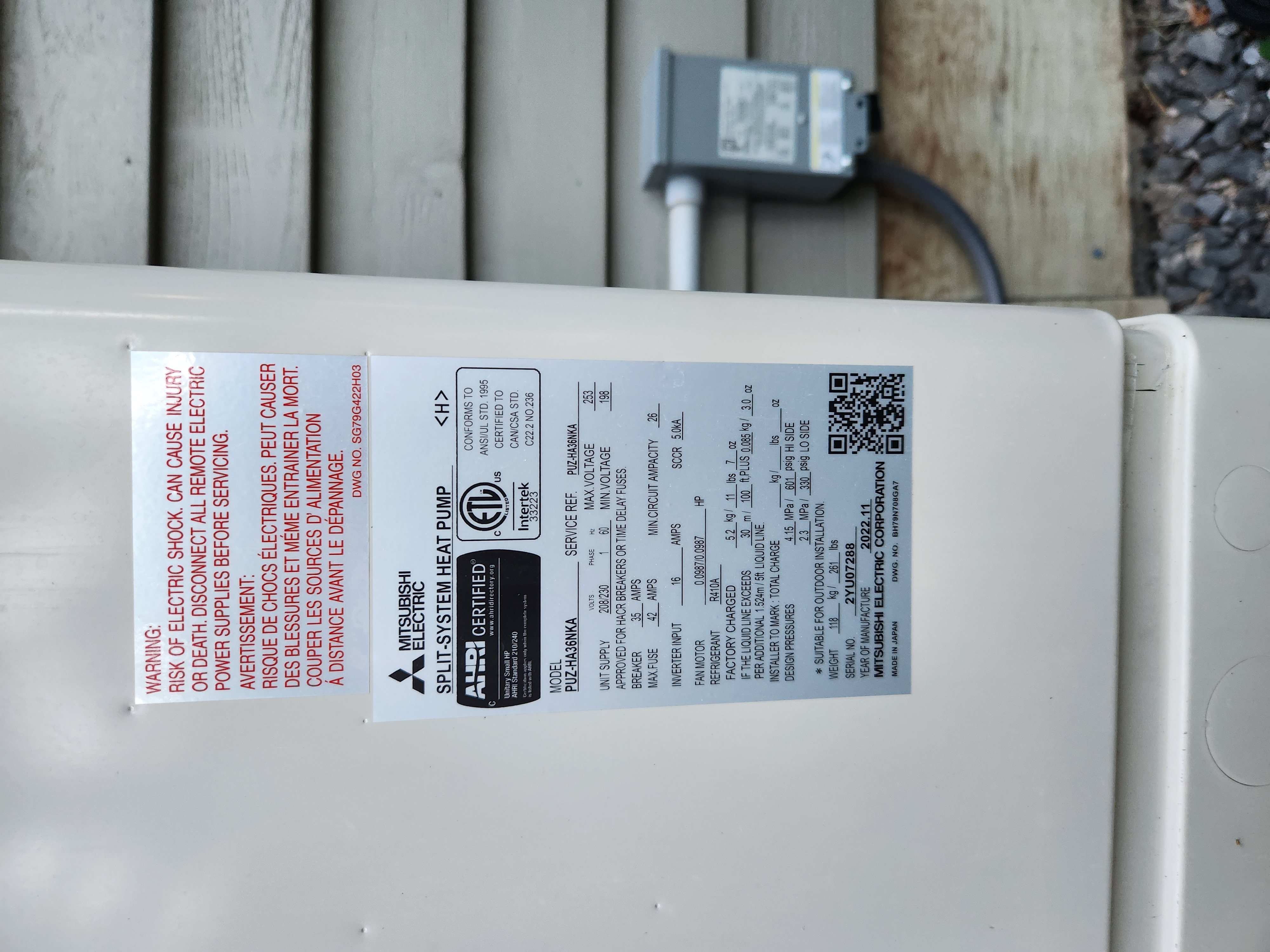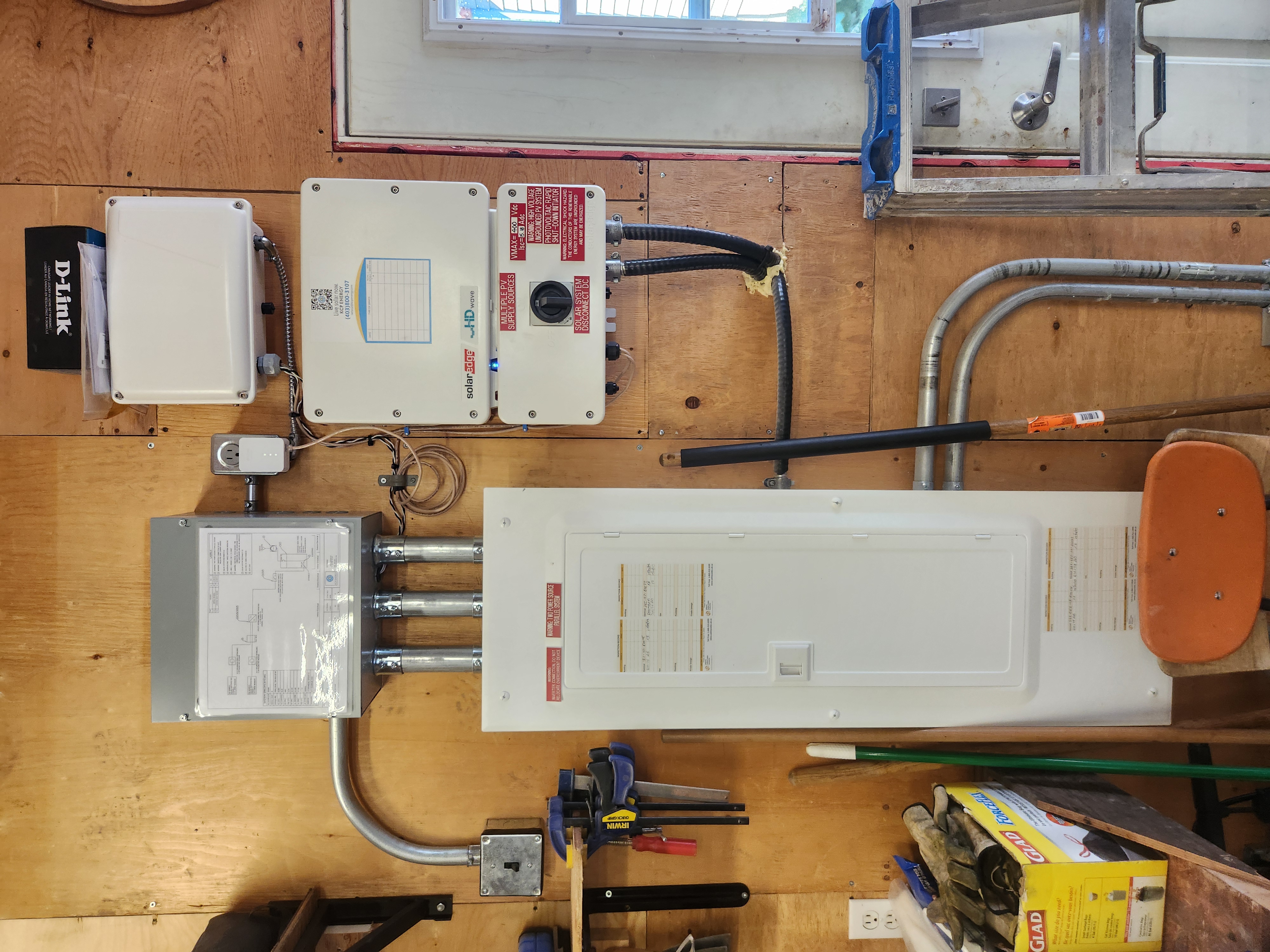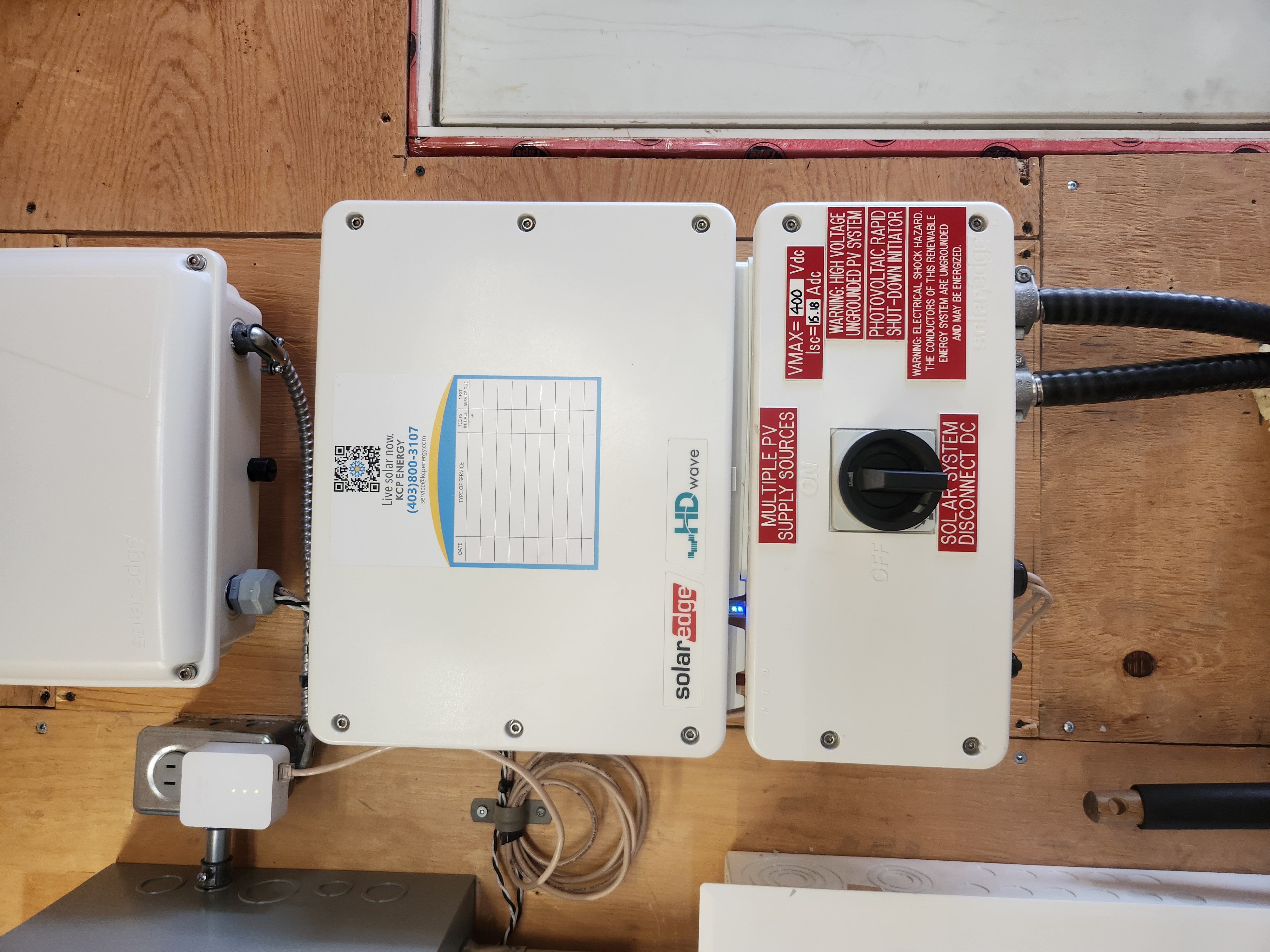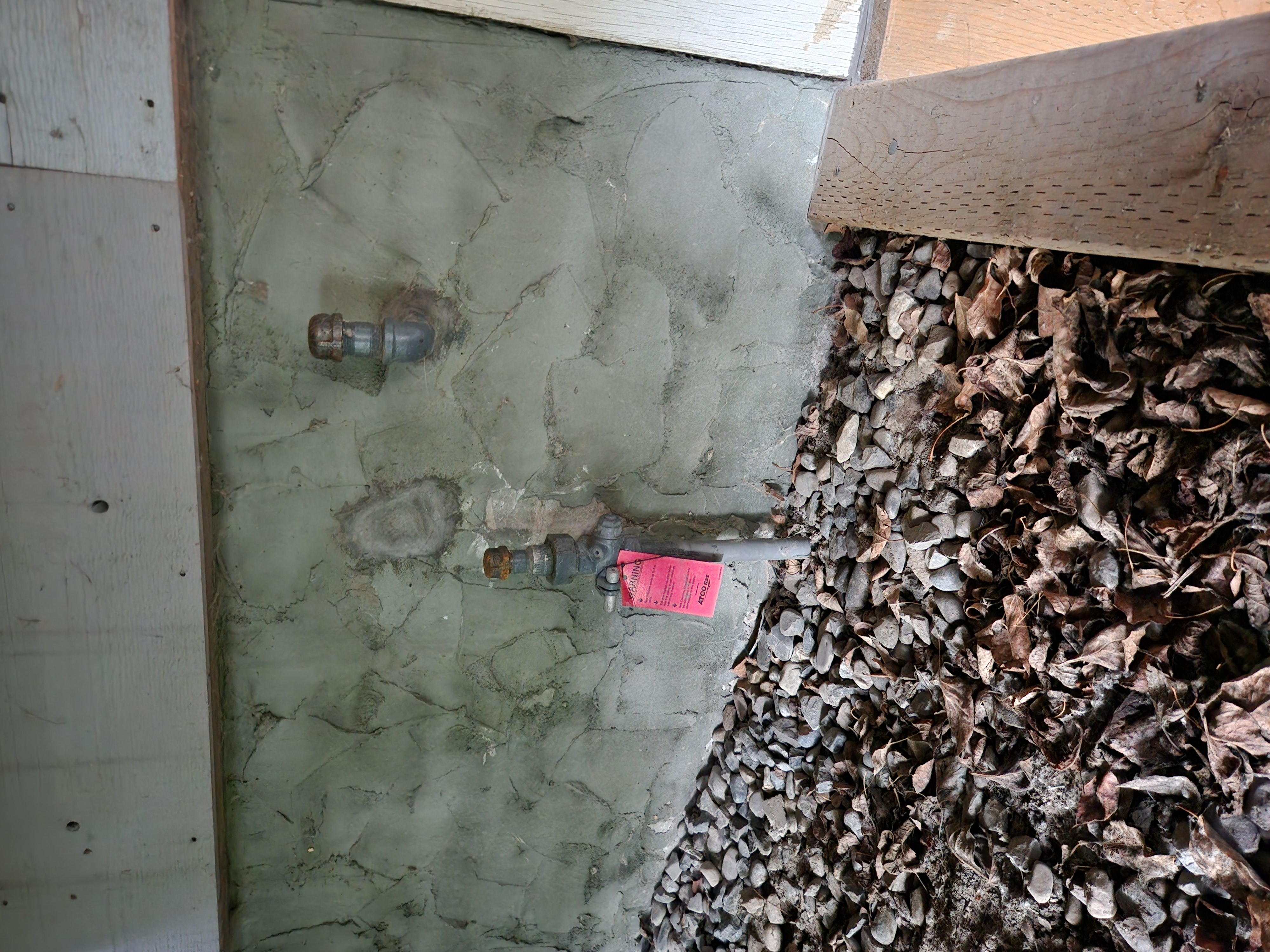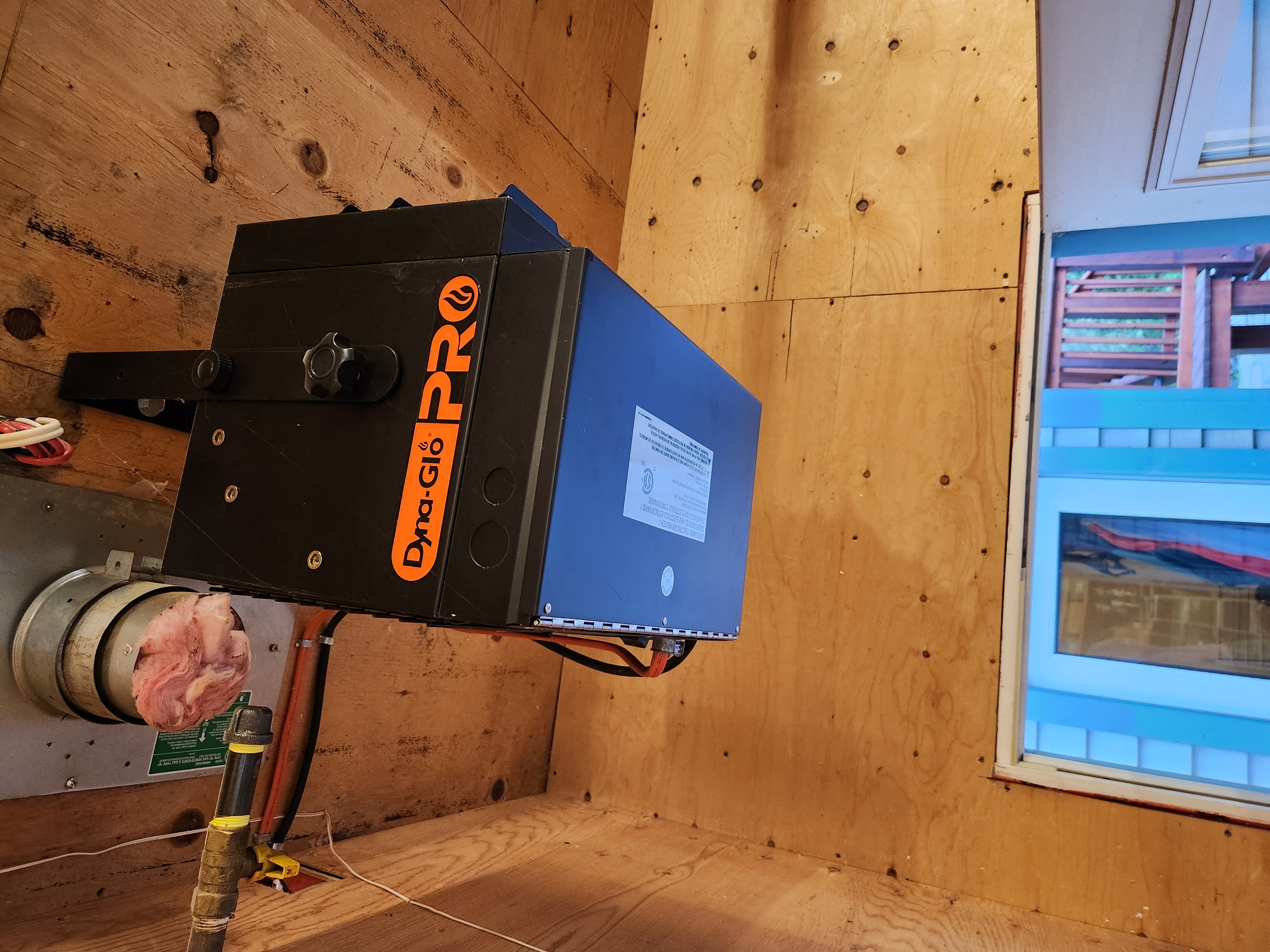Retrofit in the Rockies
With a primarily mechanical approach, and a solar PV installation, this family reduced the energy consumption of their home by over 60%.
| Building Type | Single-Family 2+ Stories | Location | Bow Valley, AB |
| Year Built | 1940 | Foundation Type | Concrete (Full Basement) |
| Structure Type | Wood-Framed | Total Floor Area | 304.1m2 |
| Climate Zone | 7a | Heating Degree Days | 5400 |
| Retrofit Status | Complete | Year Completed | 2023 |
| Retrofit Phasing | No | Geometry Changed | No |
| Annual Energy Savings | 65.76% | Operational Carbon Savings | 3.36 tCO2eq/yt |
| Retrofit Type | Mechanical | Performance Level | Significant energy consumption reduction, but not yet next-zero ready |
Project Team
- KCP Energy Inc. ( Solar Design and Installation )
- Shift Air Mechanical Limited ( Heat Pump Installation )
Project Priorities
- Increase Thermal Comfort
- Improve Indoor Air Quality
- Reduce GHG Emissions
Upgrades
- A solar array was installed
- Replaced furnace with an air source heat pump
- Hybrid heat pump/electric hot water tank
- 2 Doors replaced with high efficiency option
- Updated electrical service to 200 amps
Project Description
Planning the Retrofit
As this home underwent a major renovation in 2007, many of the envelope components of this home have not yet reached the end of their life. With maximizing the envelope, timely replacement of aging heating equipment, and affordability in mind, the family took on a mechanical first approach.
In this DER the family electrified their space heating with an air source heat pump, and their hot water heating with a hybrid heat pump-electric hot water heater. They added a solar PV array to the roof for renewable energy generation, and replaced two of their exterior doors with higher insulation options. With these upgrades the family was able to fully disconnect from their natural gas service.
While it is not necessarily a part of the retrofit, the family also has incorporated two EV’s into their household as part of their approach to energy management. With the support of their new roof top solar, these additions have reduced their transportation costs to approximately $5 per 100km, where the family’s previous internal combustion engine vehicles costed around $20 per 100km to operate.
It should be noted that there is an error on the Energuide Home Owner Information Sheet: The HOIS reads that the home still uses a small amount of natural gas, but the gas has been fully disconnected and is no longer in use.
Lessons Learned
- Many HVAC companies offer quotes for specific brands that they have affiliations with, but not others. For those who want to look at heat pumps from multiple brands it may be necessary to ask for quotes from multiple companies, or to find specific companies that offer multiple brands.
- If the homeowner aims to access supports, like grants or low interest loans, it is important to ensure that the selected equipment qualifies for these supports. If there is a change in the equipment selection, it is important to check that the new selection is compliant with the criteria for financial support.
- This project used the old natural gas chimney path as the route for the hybrid hot water tank ducting, but the family is finding that the vertical chimney is acting as a cold sink, and allowing cold air to enter their basement. The family is considering capping that chimney and finding another solution that does not give cold air a direct path into their home.
- Many HVAC professionals say that heat pumps are more costly to operate than natural gas furnaces. They are correct when it comes to homes that have lower levels of insulation and high ACH values, which is most homes that have not undergone envelope retrofits. Thanks to this family’s dedication to collecting data on their energy use, they found that their total energy costs rose by approximately $260.00 per year when including solar generation savings and excluding the costs associated with their two new EVs. When adjusted to remove the effects of solar and EVs, the cost differential is roughly $100 more per month compared to their previous gas-heated setup. This increase reflects both the higher operating cost of the resistive electric heater in the detached garage and the savings achieved from eliminating monthly natural gas delivery fees. This data was collected in the first few years of having the heat pump installed, and some programming corrections have since been made that could lower these costs moving forward.
- The garage is currently heated with a simple resistive electric heater rather than gas or a heat pump. Because the garage is a separate building, installing a second heat pump would have added significant cost. The family is considering purchasing a used or low-cost heat pump in the future to reduce electricity consumption and costs.
- Disconnecting from natural gas provided another major source of savings, as the family no longer pays monthly gas delivery fees.
Specific questions for homeowners and builders to ask HVAC specialists during the heat pump quote process:
- Does your company have experience with designing heat pump solutions in accordance with the heat loads of the building? Can I see a plan for how your system would meet the heat loads of my building?
- Do you offer systems using minisplit heat pumps? (This is especially useful for thermal comfort in homes with multiple floors, and for being able to turn off units in the summer where only one zone might require cooling).
- Does your company have a tech on staff that is trained in installing the models you are providing quotes on? What options are available for controls with each unit? (Some companies offer quotes on units that their techs are hesitant to install because they do not have experience with them. This can result in last minute changes and a challenging installation process. If there is a model of heat pump that you are particularly interested in it would be worth finding a company that offers techs with experience with that model.)
- Can we see a drawing of where this unit will sit in the mechanical room (This is helpful for seeing that the installer has a plausible plan to follow, and for planning purposes. If you will need to move other appliances or bring in an electrician to install wiring a drawing will be very helpful in ensuring the installation process goes smoothly).
- Will you be programming the unit to stop operating below a certain temperature set point and for the system to switch to exclusively resistive heating? (This is important because below certain temperatures a heat pump will be able to operate, but it will struggle, and a certain amount of resistive heat back up will be required anyways. When this happens it is more efficient, and more cost effective, to switch entirely to the resistive heat back up, but the heat pump will need to be programmed to do so.)
- Does the thermostat you recommend allow me to program the heat pump with the thermostat? (Some heat pumps are only programmable with the thermostat the company developed for that heat pump and getting a different thermostat would mean you would not be able to reprogram it yourself)
Before & After
General |
Envelope |
Mechanical & Electrical |
Annual Energy Usage |
Carbon Emissions* |
